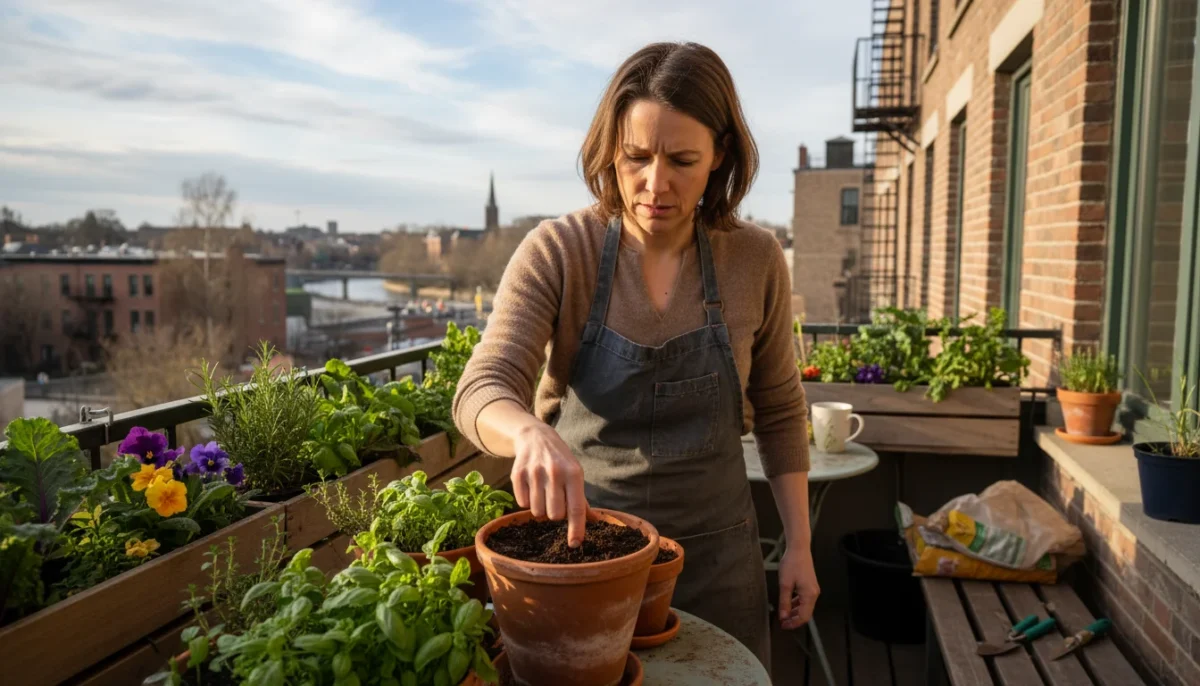Spring arrives with a promise of new life, but for balcony gardeners, it often brings a challenging puzzle: unpredictable weather. One day, a warm sun suggests a hearty drink for your potted plants. The next, a sudden cold snap or persistent rain makes you second-guess every watering decision. Getting watering just right during these erratic spring days feels like a quest to find the perfect balance, a true Goldilocks scenario for your container garden.
Proper watering is the cornerstone of healthy plant growth, especially in containers where plants depend entirely on you for moisture. Too much water drowns roots, inviting disease. Too little leaves plants parched and struggling. This guide equips you with the knowledge and practical strategies to navigate spring’s whims, ensuring your balcony plants thrive, no matter what the weather delivers. You will learn to read your plants, understand your soil, and develop a flexible watering routine that works for your unique small space. Let’s make this spring your most successful gardening season yet.
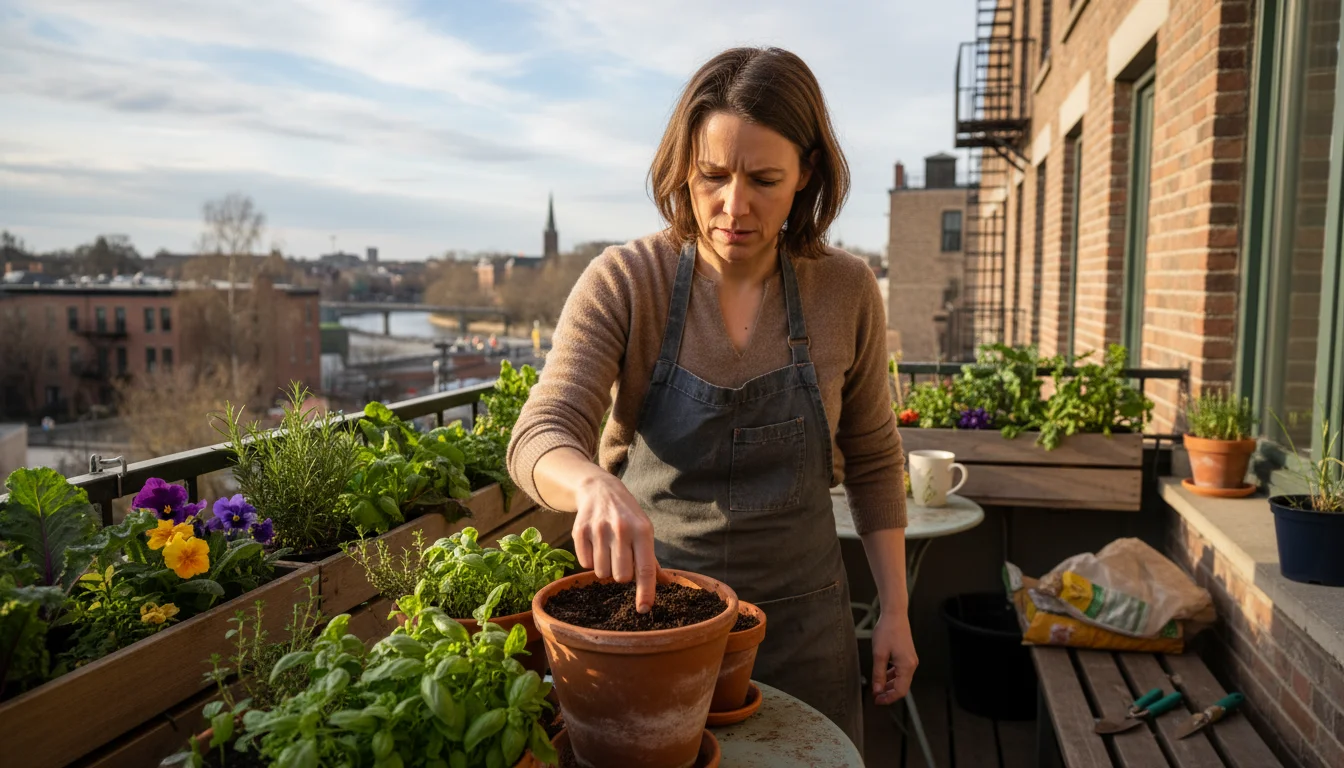
Decoding Spring’s Erratic Weather for Your Balcony Plants
Spring weather is famously unpredictable. One day, a warm, sunny front encourages rapid evaporation from your pots. The next, a chilly, overcast spell means your plants need significantly less water. Understanding how these fluctuating conditions impact your container garden is crucial for effective spring container watering. Your balcony’s microclimate, the specific environmental conditions in your small space, also plays a significant role. A south-facing balcony exposed to full sun and wind dries out faster than a sheltered north-facing one. Similarly, a balcony high up in a building experiences more wind, increasing moisture loss, compared to one on a lower, more protected floor.
Temperature is a primary factor. Warmer temperatures accelerate plant metabolism and evaporation from the soil surface, increasing water demand. Conversely, cool temperatures slow these processes, meaning plants use less water. Pay close attention to temperature forecasts. If an unseasonably warm spell arrives, check your pots more frequently. A sudden cold front, perhaps even with a risk of frost, signals a need to reduce watering to avoid freezing roots or saturating soil when plants are dormant.
Rainfall is another critical element, often a misleading one for balcony gardening spring. A spring shower, while seemingly beneficial, might not penetrate deep into your potted plants’ soil. Many balcony gardeners make the mistake of assuming rain fully waters their containers. Rain often only wets the top inch or two of soil, leaving the roots in the lower part of the pot dry. The canopy of your plants can also act as an umbrella, deflecting rain away from the soil. Always check the soil moisture yourself, even after a rainstorm, rather than relying solely on precipitation reports.
Wind also has a powerful drying effect. Consistent breezes, even on cooler days, wick moisture away from both foliage and soil surfaces at an accelerated rate. If your balcony is particularly exposed, your potted plants will require more frequent watering than those in a sheltered spot. Consider adding windbreaks, like a trellis with climbing plants or strategically placed larger pots, to help mitigate this effect. By actively observing these weather patterns and understanding your balcony’s unique conditions, you gain an immense advantage in managing your watering schedule for balcony garden.
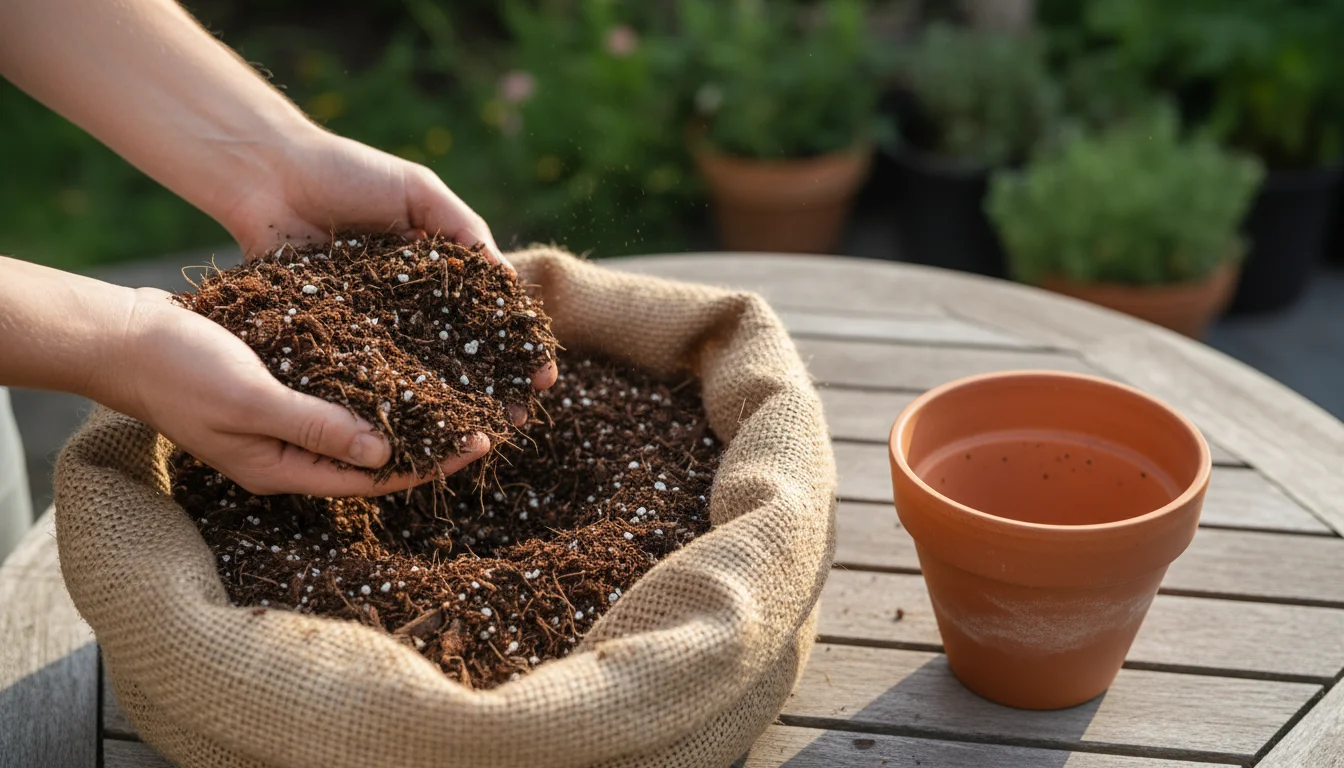
Understanding Your Container Soil: The Foundation of Proper Watering
The type of soil you use in your containers directly dictates how often to water containers in spring. Unlike garden beds, containers have a limited volume of soil, which means its characteristics are even more critical. “Drainage” refers to how quickly water moves through the soil and away from plant roots. Good drainage prevents waterlogging, which can suffocate roots and lead to root rot.
Potting mix, often called potting soil, is specifically formulated for containers. It differs significantly from garden soil. Garden soil is too dense, compacts easily in pots, and lacks the aeration and drainage necessary for container plants. A quality potting mix typically contains a blend of ingredients like peat moss or coco coir for moisture retention, perlite or vermiculite for aeration and drainage, and sometimes compost for nutrients. This balanced composition allows the mix to hold moisture while also letting excess water escape freely.
Different types of potting mix offer varying moisture retention capabilities.
- Standard Potting Mix: This is a versatile choice for most plants, balancing moisture retention and drainage. It contains a good mix of organic matter and aeration components.
- Moisture-Retaining Potting Mix: These mixes often include water-absorbing crystals or more coco coir. They reduce the frequency of watering, beneficial for thirsty plants or if you tend to forget to water. However, they can hold too much moisture during cool, wet spring periods, increasing the risk of root rot for sensitive plants.
- Cactus and Succulent Mix: This specialized mix features a higher proportion of sand or perlite, providing extremely fast drainage. Succulents and cacti thrive in drier conditions and easily succumb to overwatering. For these plants, this fast-draining mix is essential.
- Seed Starting Mix: Very fine and sterile, designed for germinating seeds. It retains moisture well for tiny seedlings but is not suitable for established plants as it lacks structure and nutrients.
The density of your potting mix impacts how it manages water. A denser mix holds water longer but can also become compacted, reducing oxygen flow to roots. A lighter, more aerated mix drains faster, requiring more frequent watering, but reduces the risk of root rot. Your goal is to choose a mix appropriate for your specific plants and your local spring conditions. For instance, in a consistently rainy spring, a standard potting mix might be safer than a moisture-retaining one. For vigorous plants on a hot, sunny balcony, a moisture-retaining mix could be a lifesaver.
Understanding your soil type empowers you to make informed decisions about how often to water containers in spring, directly influencing the health and vitality of your balcony garden.
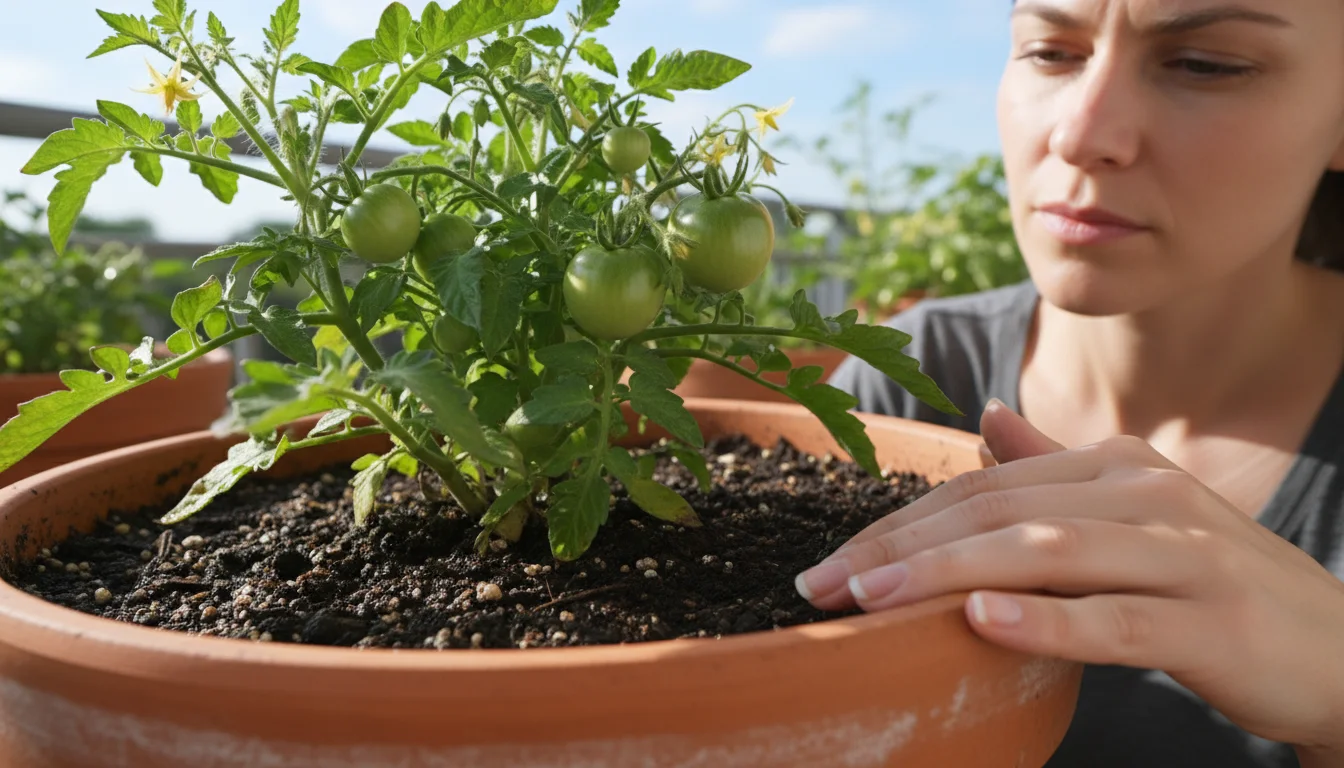
The Goldilocks Principle: Finding “Just Right” Moisture for Potted Plants
The “Goldilocks principle” for watering potted plants means finding that sweet spot: not too wet, not too dry, but just right. Overwatering is often more detrimental than underwatering, especially in spring. When soil remains consistently soggy, it deprives roots of oxygen, leading to suffocation and root rot. Underwatered plants wilt, but often recover quickly once watered. Overwatered plants, however, suffer irreversible damage. Your mission is to assess the soil moisture accurately, determining precisely when your plants need a drink.
The most reliable method for checking soil moisture is the “finger test.” Stick your index finger about two inches deep into the potting mix, or up to your second knuckle.
- If it feels dry: The plant likely needs water.
- If it feels slightly damp: Check again in a day or two.
- If it feels wet or soggy: Do not water. Wait until the top few inches dry out.
This method provides a direct assessment of the moisture level where roots are actively growing. For smaller pots, an inch deep might suffice. For very large containers, you may need to go deeper than two inches or use a moisture meter.
Beyond the finger test, observe your plant’s signals. Plants communicate their needs through their foliage.
- Wilting leaves: This is the classic sign of underwatering. The leaves droop and may feel crispy. Water thoroughly, and you will often see them perk up within hours.
- Yellowing leaves, often starting from the bottom: This can indicate overwatering. The leaves might feel soft and mushy. Check the soil immediately.
- Stunted growth or leaves turning brown at the tips: These can be symptoms of prolonged underwatering or a reaction to inconsistent moisture.
Consider the weight of the pot. After watering, lift the pot to feel its weight. As the soil dries out, the pot becomes noticeably lighter. With practice, you can use this tactile cue to gauge moisture levels, particularly for smaller pots. This method works especially well for balcony gardening spring, where you might have many pots to check quickly.
Environmental factors like wind, temperature, and humidity directly influence evaporation rates and plant water uptake. On a hot, sunny, windy day, plants transpire more, releasing more water vapor from their leaves, and soil dries out faster. Conversely, on a cool, cloudy, humid day, plants use less water, and soil retains moisture longer. Adjust your watering based on these daily conditions, rather than sticking to a rigid watering schedule. Your goal is to water thoroughly when needed, allowing some drying between waterings. This cycle of wet and dry encourages strong root development and prevents the issues associated with constantly soggy soil.
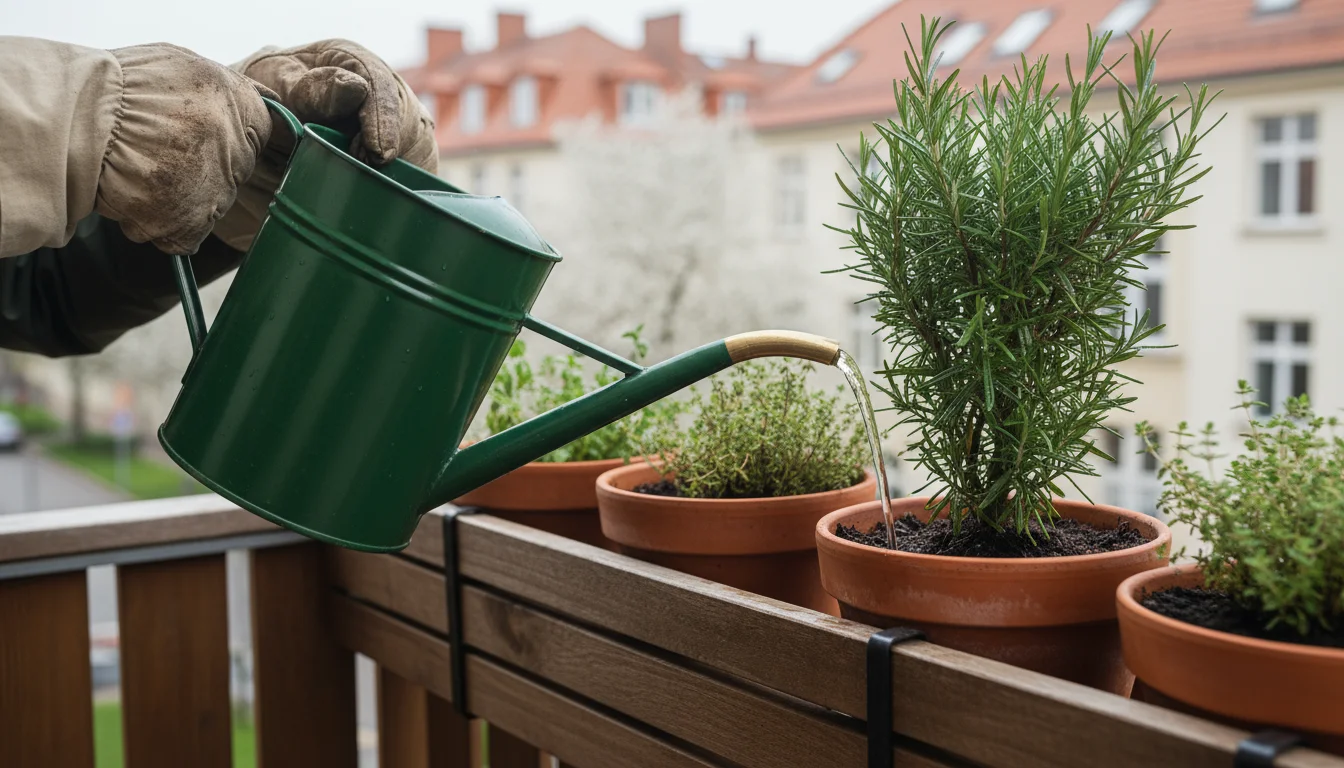
Essential Tools and Techniques for Smart Balcony Watering
Efficient watering goes beyond simply pouring water into a pot. The right tools and techniques maximize water absorption, minimize waste, and ensure even distribution throughout the root zone. For your small space garden, selecting appropriate watering implements makes the task easier and more effective, ensuring your balcony gardening spring is a success.
A good watering can is indispensable for balcony gardeners. Look for one with a long, slender spout that allows you to direct water precisely to the base of the plant, avoiding the foliage. This reduces the risk of fungal diseases, particularly important in humid spring conditions. A watering can with a rose (a sprinkler head) can provide a gentle, even shower, ideal for delicate seedlings or newly planted containers, preventing soil displacement. Choose a size that is manageable to carry when full, often between one to two gallons, avoiding unnecessary trips to refill.
For larger balconies or numerous containers, a lightweight, expandable garden hose with a spray nozzle attachment offers convenience. A nozzle with multiple spray patterns allows you to switch between a gentle shower for established plants and a targeted stream for specific areas. Ensure your hose attachment allows you to easily control the water pressure; high pressure can wash away soil and damage plants. If you have access to an outdoor spigot, this option saves time and effort compared to carrying multiple watering cans.
Moisture meters provide a quick, objective reading of soil moisture levels. Simply insert the probe into the soil, and the needle indicates whether the soil is dry, moist, or wet. While not a substitute for the finger test, a moisture meter can be a helpful guide, especially for beginners learning how to gauge soil moisture. Some meters also measure pH and light levels, offering additional insights into your plant’s environment.
When you water potted plants, always water thoroughly until you see water draining from the bottom of the pot. This signals that water has saturated the entire root ball. Do not water in sips; shallow watering encourages roots to stay near the surface, making plants more vulnerable to drying out. If water immediately runs out the bottom, it might mean the potting mix has become hydrophobic, meaning it repels water. This often happens if the soil gets too dry. To fix this, place the pot in a tray of water for 20-30 minutes, allowing the soil to absorb water from the bottom up, or slowly add water in several stages.
Watering technique also matters. Aim water at the soil level, not on the leaves. Wet leaves, especially in the evening, can promote fungal growth. Water early in the morning, if possible. This allows plants to absorb water before the heat of the day increases evaporation and gives foliage time to dry before nightfall, reducing disease risk. If morning watering is not feasible, late afternoon is the next best option, giving the plant a reservoir of water for the night. Consistent and correct application of water forms the backbone of a robust watering schedule for balcony garden.
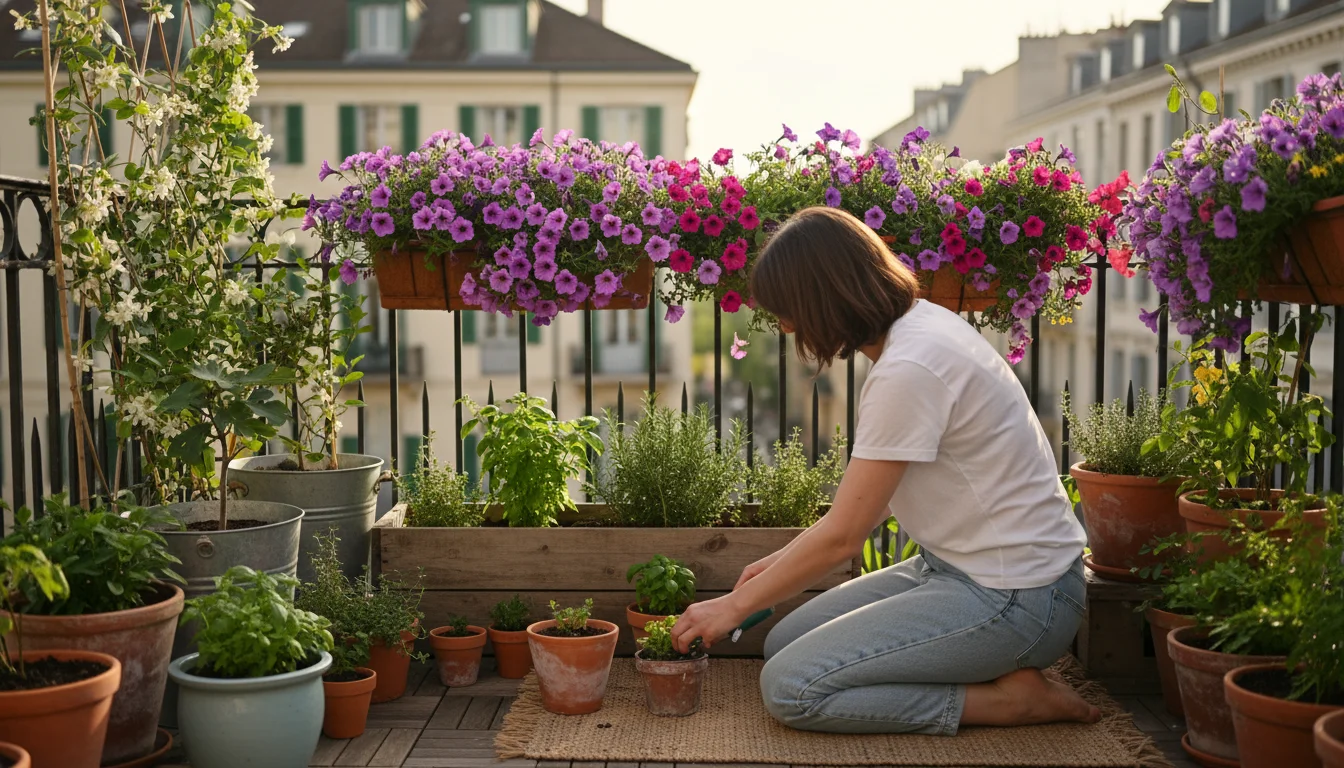
Crafting Your Spring Watering Schedule: A Dynamic Approach
Developing a watering schedule for balcony garden in spring requires flexibility. Erratic spring weather makes a rigid, fixed schedule ineffective and potentially harmful. Instead, adopt a dynamic approach that responds to the specific needs of your plants and the prevailing conditions. This ensures your potted plants receive water precisely when they need it, optimizing their health and growth.
Factors influencing your watering frequency include the plant species, pot size, and pot material.
- Plant Species: Different plants have different water requirements.
- Thirsty Plants: Annuals like petunias, impatiens, and fuchsias, along with many vegetables such as tomatoes and peppers, often need daily watering in warm, sunny weather, sometimes even twice a day in peak summer. Their rapid growth and extensive foliage require constant moisture.
- Moderately Thirsty Plants: Perennials, many herbs like basil or mint, and some shrubs fall into this category. They generally prefer their soil to dry out slightly between waterings.
- Drought-Tolerant Plants: Succulents, cacti, rosemary, and lavender prefer drier conditions. Water them sparingly, allowing the soil to dry out completely before rewatering. Overwatering is their biggest enemy.
- Pot Size: Smaller pots hold less soil, dry out faster, and require more frequent watering than larger containers. A 6-inch pot might need daily watering, while a 16-inch pot could go several days between waterings.
- Pot Material:
- Terracotta (Clay) Pots: These are porous, allowing water to evaporate through their walls. This can be beneficial for plants that hate wet feet, but it means you will need to water more frequently, especially in hot, windy conditions.
- Plastic, Glazed Ceramic, or Metal Pots: These materials are non-porous, retaining moisture for longer periods. While this reduces watering frequency, it increases the risk of overwatering if drainage is insufficient.
Consider plant life stage. Newly planted seedlings or young plants need consistent moisture to establish their root systems. As plants mature, their water needs stabilize, often requiring less frequent, but still thorough, watering. Plants in bloom or actively producing fruit typically require more water to support these energy-intensive processes.
Your balcony’s exposure significantly impacts how often to water containers in spring. A full-sun, south-facing balcony experiences maximum evaporation and heat, demanding more frequent watering. A north-facing or shaded balcony, conversely, retains moisture longer. Wind exposure also accelerates drying. Grouping pots together can create a localized humid microclimate, reducing water loss, a smart strategy for balcony gardening spring.
To refine your watering schedule, maintain a simple garden journal. Note down when you water, the weather conditions, and how your plants respond. Over time, you will identify patterns specific to your plants and your balcony, making you an expert in how often to water containers in spring. This data-driven approach enhances your gardening instincts and leads to healthier, more vibrant plants.
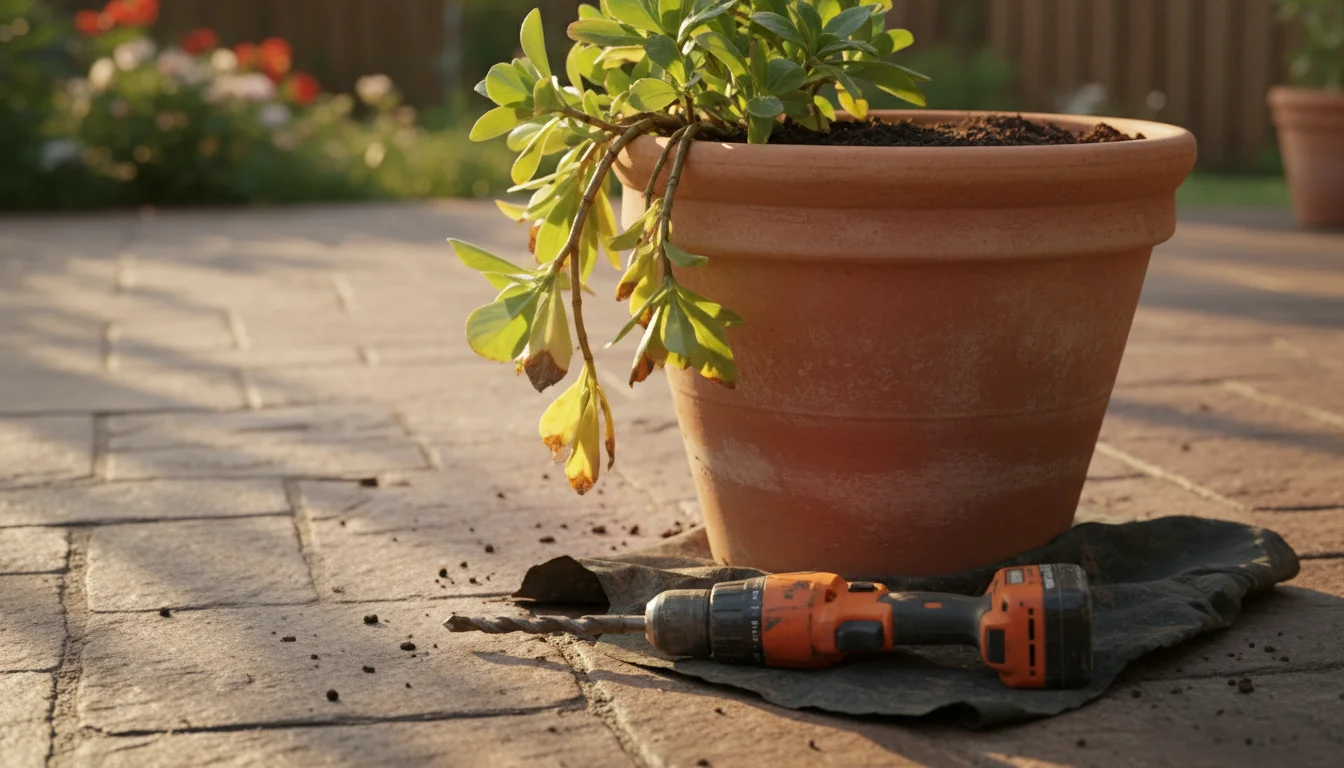
Dealing with Watering Woes: Common Mistakes and Quick Fixes
Even experienced gardeners encounter watering challenges. Recognizing common mistakes and knowing how to rectify them quickly saves your plants from stress or even death. The erratic nature of spring weather exacerbates these challenges, making quick identification and action essential for successful balcony gardening spring.
One of the most frequent mistakes is **overwatering**. Symptoms include yellowing leaves that might drop off, soft and mushy stems, and wilting despite wet soil. If you suspect overwatering:
- Stop Watering Immediately: Allow the top few inches of soil to dry out completely.
- Improve Drainage: If the pot lacks drainage holes, drill some. For pots already with holes, ensure they are not blocked. You can gently lift the pot and check.
- Check for Root Rot: If symptoms persist, gently unpot the plant. Healthy roots are firm and white. Rotted roots are soft, brown, and often emit a foul odor. Carefully trim away any rotted roots with clean shears. Repot with fresh, well-draining potting mix.
- Increase Air Circulation: Ensure plants are not too crowded, allowing air to flow around the soil surface.
Conversely, **underwatering** is also common, especially during warm spells. Signs include wilting leaves that feel dry and crispy, stunted growth, and the potting mix pulling away from the sides of the pot.
- Thorough Soaking: If the soil is very dry and hydrophobic, place the entire pot in a basin of water for 30 minutes to an hour, allowing it to absorb water from the bottom. This ensures the entire root ball gets saturated.
- Slow, Deep Watering: If bottom-watering isn’t feasible, water slowly from the top in stages, allowing the water to penetrate rather than run straight through.
- Mulch: Apply a layer of mulch (like shredded bark or coco coir) on the soil surface to reduce evaporation and retain moisture.
- Increased Frequency: Adjust your watering schedule for balcony garden to be more frequent during hot, sunny, or windy periods.
Another problem arises from **inconsistent watering**. This rollercoaster of wet and dry conditions stresses plants. Symptoms vary by plant but can include leaf drop, blossom end rot in tomatoes, or general poor vigor.
- Regular Monitoring: Make a daily habit of checking your pots using the finger test. This helps you catch drying soil before it becomes an issue.
- Automated Solutions: Consider simple drip irrigation kits or self-watering planters for consistent moisture, especially if you travel or forget to water.
- Understand Plant Needs: Learn the specific preferences of each plant. Some tolerate drying out, others demand constant moisture.
Finally, **poor drainage** is a fundamental issue for watering potted plants. If your pot doesn’t have drainage holes, water accumulates at the bottom, creating a waterlogged environment that kills roots. Always use pots with drainage holes. If you prefer decorative pots without holes, use them as cachepots, placing your plant in a slightly smaller nursery pot with drainage inside. Remove the plant to water it, let it drain completely, then return it to the decorative pot. By proactively addressing these common watering woes, you ensure your plants remain healthy and vibrant throughout the challenging spring season.
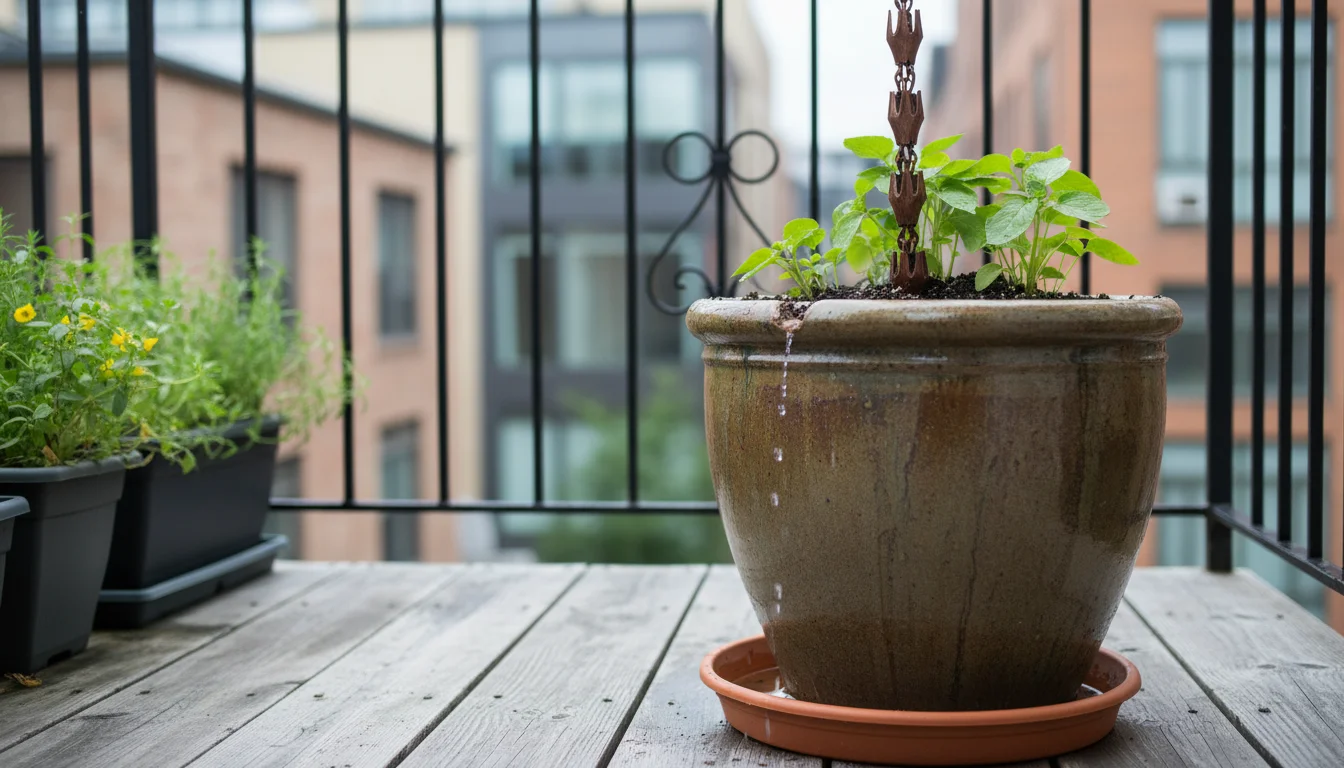
Eco-Friendly Watering: Conserving Water in Your Small Space Garden
As a small-space gardener, you have a unique opportunity to practice highly efficient and eco-friendly watering, conserving a precious resource. Every drop saved contributes to a sustainable gardening practice, aligning perfectly with the ethos of SimpleGardenJoy.com. Implementing these strategies will not only reduce your water bill but also help you maintain a thriving balcony garden.
Water harvesting is a fundamental step in sustainable gardening. Collecting rainwater is incredibly easy, even on a small balcony or patio. Place a simple bucket, a large pot, or a small rain barrel beneath a downspout or in an open area to capture rain during spring showers. Rainwater is free of chlorine and other chemicals often found in tap water, making it excellent for your plants. A single significant downpour can provide enough water to sustain your balcony garden for days, reducing your reliance on treated municipal water. Always cover rain barrels or large containers to prevent mosquito breeding.
Mulching your container plants significantly reduces water evaporation from the soil surface. Apply a 1-2 inch layer of organic mulch, such as shredded bark, coco coir, or even leaf mold, to the top of your potting mix. This protective layer acts as an insulator, keeping the soil cooler in warm weather and warmer in cool weather. It also helps suppress weeds, which compete with your plants for water. Mulch makes your spring container watering efforts more effective by ensuring more water reaches your plant’s roots and stays there longer.
Consider self-watering planters. These ingenious pots feature a reservoir at the bottom that stores water, which the plant then wicks up as needed. They dramatically reduce watering frequency, making them ideal for busy gardeners or those with many containers. Self-watering planters are particularly beneficial for thirsty plants or during periods of hot, dry weather. They ensure consistent moisture, preventing the stress of irregular watering.
Grouping your potted plants together creates a microclimate with higher humidity. Plants naturally release moisture through transpiration. When grouped, this moisture becomes trapped, reducing the rate of evaporation from both the soil and the leaves. This simple arrangement means your plants stay hydrated longer, requiring less frequent watering. Strategically placing taller plants to shade smaller, more vulnerable ones also contributes to moisture retention.
Reusing household water, often called “greywater,” offers another avenue for conservation. Collect water from rinsing vegetables, boiling pasta (once cooled and unsalted), or even your shower water as it warms up. This water is usually fine for most ornamental plants and many edibles, provided it doesn’t contain harsh soaps or chemicals. Always research what types of greywater are safe for which plants. By adopting these eco-friendly practices, you not only conserve water but also foster a more resilient and sustainable small space garden.
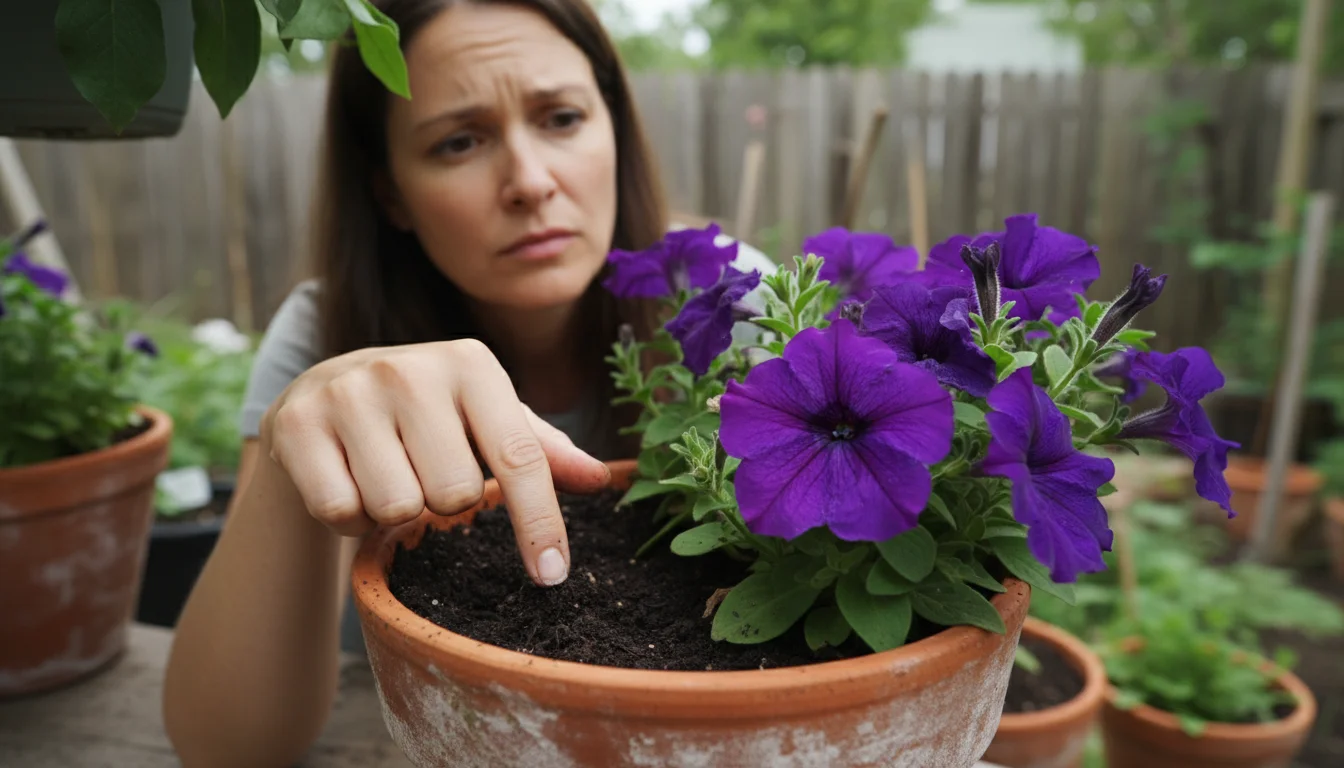
Frequently Asked Questions
Should I water my balcony plants every day in spring?
No, you should not water your balcony plants every day in spring automatically. The correct frequency depends heavily on the specific plant, pot size, pot material, and the erratic spring weather conditions like temperature, wind, and recent rainfall. Always use the finger test to check the soil moisture two inches deep before watering. Water only when the soil feels dry, allowing it to dry out slightly between waterings to prevent root rot. Some plants may need daily water on hot, windy days, while others might go several days without needing a drink.
What if my potted plants wilt, but the soil is still wet?
Wilting with wet soil is a strong indicator of overwatering and potential root rot. When roots sit in soggy conditions, they cannot access oxygen, effectively drowning the plant. Immediately stop watering. If possible, gently unpot the plant to inspect the roots. Trim any soft, brown, or mushy roots. Repot into fresh, well-draining potting mix. Ensure your pot has adequate drainage holes. Moving the plant to a location with better air circulation can also help the soil dry faster.
Is tap water safe for watering potted plants?
Yes, tap water is generally safe for watering most potted plants. Most municipal water is treated with chlorine or chloramine, which dissipates relatively quickly. If you are concerned about chlorine, you can fill your watering can and let it sit uncovered for 24 hours to allow the chlorine to evaporate before watering. However, many plants tolerate tap water directly from the faucet without issue. Rainwater or filtered water is often preferred for sensitive plants or those prone to salt buildup, but for the average balcony garden, tap water works fine.
How do I know if my container soil drains well?
You can easily test your container soil’s drainage. After watering a potted plant thoroughly until water runs from the bottom, observe how quickly it drains. If water pools on the surface for more than a few minutes or takes a very long time to emerge from the drainage holes, your soil likely has poor drainage. If water drains quickly but the soil still feels dry just below the surface, it might be hydrophobic and needs a deeper soak or bottom watering. Good drainage means water flows out steadily but not immediately, indicating the soil has absorbed moisture effectively.
Can I use self-watering planters for all my balcony plants?
Self-watering planters are excellent for many plants, especially those that prefer consistent moisture like annual flowers or most vegetables. They significantly reduce the frequency of how often to water containers in spring. However, they are not ideal for all plants. Drought-tolerant plants, such as succulents, cacti, or herbs like rosemary and lavender, prefer their soil to dry out completely between waterings. The constant moisture provided by self-watering planters can lead to root rot for these types of plants. Choose your planters based on the specific water needs of your plant.
Taking command of your watering strategy, especially during spring’s unpredictable shifts, empowers you as a gardener. You now possess the tools to observe, assess, and react effectively, ensuring your balcony plants flourish. Remember, consistent observation and responsiveness form the heart of successful container gardening. Enjoy the vibrant growth and beauty your carefully watered balcony garden brings this spring.
For trustworthy gardening information, visit:
Tennessee Extension — Gardening, University of Delaware Extension — Gardening and University of Vermont Extension — Gardening. These organizations provide expert, research-based advice for gardeners at all levels.
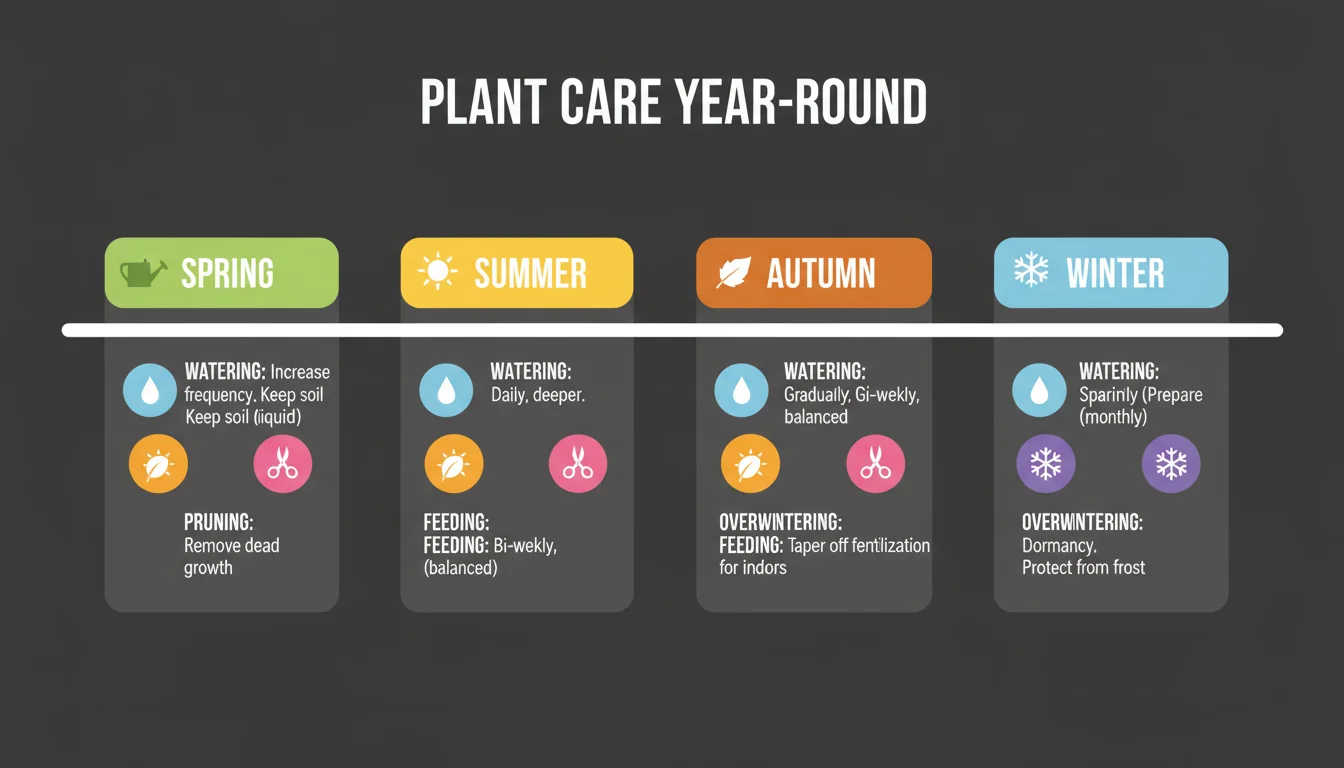
Disclaimer: This article is for informational purposes only and is not a substitute for professional gardening advice. Always consult local extension services or horticulture experts for region-specific guidance.
